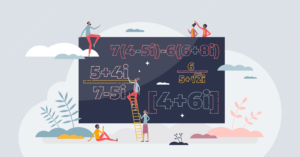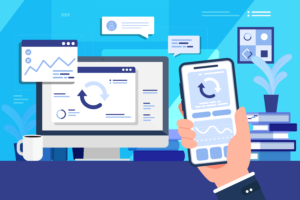Kids often complain about school, but did you know there’s a significant difference between casually complaining about school, and students who are actually disengaged with their education? In fact, a 2017 Grattan Institute report revealed that up to 40% of students Australia-wide are unproductive due to total disengagement in a given year. This is a major concern as disengagement can lead to increases in learning issues, behavioural problems, attendance difficulties, and even dropout rates.
Amidst the disruptions caused by COVID and school closures, one potential solution gaining traction was “personalised learning.” Advocates of this approach claim that it allows students to engage more effectively with what and how they learn at school. However, critics remain sceptical.
So, what exactly is personalised learning? Personalised learning is an educational approach that aims to tailor learning experiences to each student’s strengths, needs, and interests. Many education networks in the United States, as well as notable tech moguls like Bill Gates and Mark Zuckerberg, have invested millions in researching this approach. Countries such as the United Kingdom, Finland, and New Zealand are also exploring personalised learning for their school systems.
Australia, too, has begun considering personalised learning. The 2012 Gonski report emphasised the importance of “personalised learning strategies” in improving school outcomes. In fact, the ACT government explicitly states that “the ACT education system of the future will be personalised to each child.” Other regions, like NSW, have announced trials of “untimed syllabuses,” allowing students to progress at their own pace.
While personalised learning has its critics who argue it may isolate students and excessively rely on technology, its success largely depends on how it is implemented.
So, what does personalised learning look like in practice? Under this approach, the existing curriculum is tailored to each student’s interests and needs, while students are given a voice in deciding how and what they learn. One example might include a history teacher who lets students choose their own topic on a project about exploring how the past influences the present. The teacher guides them in framing research questions and ensures they have access to relevant and reliable data, but it is the students who lead the project—whether it’s about civil rights and Black Lives Matter, women’s liberation and #MeToo, or the history of computer games’ development and marketing, it’s about invoking the student’s passion and cultivating it towards authentic learning outcomes.
Researchers from the University of Canberra have observed three key methods for implementing personalised learning and culturally responsive teaching:
Personalised learning portfolios: These portfolios gather information about students’ strengths, needs, passions, interests, and identities, enabling teachers to design projects that align with students’ interests and abilities.
Flexibility: Teachers embrace flexible learning methods, allowing students to learn at their own pace and in their preferred style. Projects, instead of essays, enable students to explore topics they find intriguing or connect with communities in ways that deepen their knowledge of real-life matters. The focus moves to developing skills like critical thinking, collaboration, communication, cultural understanding, and social action. One example that the researchers found involved high school students collaborating with local farmers to address food waste issues, with teachers providing guidance as needed.
Different forms of assessment: Assessment is based on proficiency rather than grades, with emphasis on whether students are learning and meeting specific standards. Students are involved in their own assessment through “student-led conferences,” where they update their peers on what they have learned.
Students who have experienced personalised learning in the US shared that this self-paced approach was drastically less stressful than traditional learning systems. It allowed them to be themselves, and they felt their opinions and choices were more heard and respected.
Despite its potential benefits, implementing personalised learning in schools and communities will require large investments of time, effort, and professional development. It represents a significant departure from the traditional mass education approach that teachers, parents, and students are accustomed to. Initial findings from the University of Canberra researchers mentioned earlier sheds light on the challenges involved in implementing this approach.
One high school teacher shared, “Personalised learning makes sense, especially since I have a class where half of the students are highly motivated while the other half, for various reasons, show no interest in their work.“
However, another teacher expressed the difficulty of getting their students engaged in a different approach to learning, saying, “I think personalization is easier with primary students. I’m trying to implement my personal reading project in my high school, but it’s proving to be more challenging.“
While acknowledging the benefits, teachers also express concerns about the potential impact on their already significant workloads. One teacher questioned, “So, for each and every student, we have to cater to their learning. While personalised learning helps them grasp concepts, doesn’t this mean a lot of additional work for teachers?“
Personalised learning is not a magical solution, but it holds the potential to prepare learners who are self-regulating and self-motivated for life beyond school. However, it represents a paradigm shift for schools, teachers, parents, and communities alike. The future of education lies in finding ways to engage and empower students, and personalised learning offers a promising avenue. By tailoring education to individual strengths, needs, and interests, we can create an environment where students feel valued and motivated to learn. Though challenges remain, it is through ongoing research, collaboration, and a willingness to adapt that we can unlock the full potential of personalised learning and shape the future of education for the better.
If you’re an educator looking for a way to streamline your personalised learning strategy, Stackle is here to help. With customizable learner portfolios, streamlined assignments, and an all-in-one learner hub, educators are given the freedom to design their curriculums around their student’s needs with ease. To learn more, head over to https://stacklehq.com



